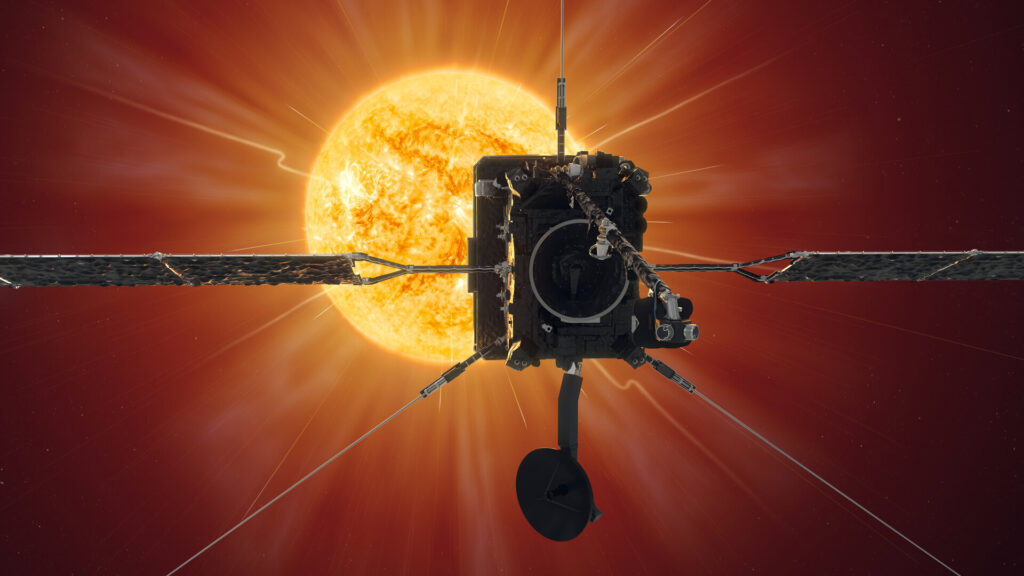ESA specialists conducted training aimed at testing the search procedure in deep space. They trained to rescue the Solar Orbiter.
Dangers of perihelion
On April 4, Solar Orbiter will undergo another perihelion of its orbit. The spacecraft will approach our star at a distance of 45 million km. This is less than the distance between the Sun and Mercury.

The moments of perihelion passage are the most scientifically valuable stages of the mission, when the Solar Orbiter can get the most information. But, at the same time, they are also the most dangerous. At perihelion, the Solar Orbiter’s heat shield has to cope with temperatures reaching 500 °C. And the spacecraft also receives less energy than usual. Due to the intense heat, it has to deflect the batteries away from the Sun to avoid damage.
Solar Mode of Solar Orbiter
Therefore, in the event of any emergency, Solar Orbiter will not be able to wait for engineers on Earth to figure out what happened and send a team. The probe will automatically go into safe mode.

In safe mode, the Solar Orbiter will be permanently deployed with a heat shield in direction of the Sun. The next task will be to establish communication with Earth, for which stellar sensors will be used.
However, if the stellar sensors fail to fix on the right stars or some kind of malfunction occurs, the Solar Orbiter will not be able to find out where the Earth is. The situation is further complicated by the fact that in safe mode, the Solar Orbiter can only use its backup communications antenna. It is able to move “up and down” on one axis, but not “left and right” on the other. This prevents a number of potential complications, but also means that the entire spacecraft must rotate to point the antenna in a certain direction.
The solution to the problem is “strobing”. If the Solar Orbiter is in safe mode and cannot determine the location of the Earth, it will begin to spin around one axis, keeping the heat shield pointed at the Sun, and send a signal. In fact, the spacecraft will operate in beacon mode. When its signal reaches the Earth, the ground stations will set the position of the spacecraft and establish contact.
Space training
Until recently, this scenario remained a pure theory. But the mission’s specialists decided to test it in practice by organizing training to rescue the Solar Orbiter. They were organized during the period when the spacecraft was far from the Sun The Solar Orbiter was switched in strobing mode, after which the ground stations began searching. Of course, commands were also uploaded to the spacecraft to return to normal operation in case it could not be found within a certain period of time.
The training ended with success. Ground stations have confirmed that they can hear the signal from the backup antenna. So if the Solar Orbiter does encounter a similar situation, mission specialists will be able to save it.
Earlier, we talked about how Solar Orbiter would conduct joint observations of the Sun with the Parker Solar Probe.
According to https://www.esa.int
Follow us on Twitter to get the most interesting space news in time
https://twitter.com/ust_magazine


